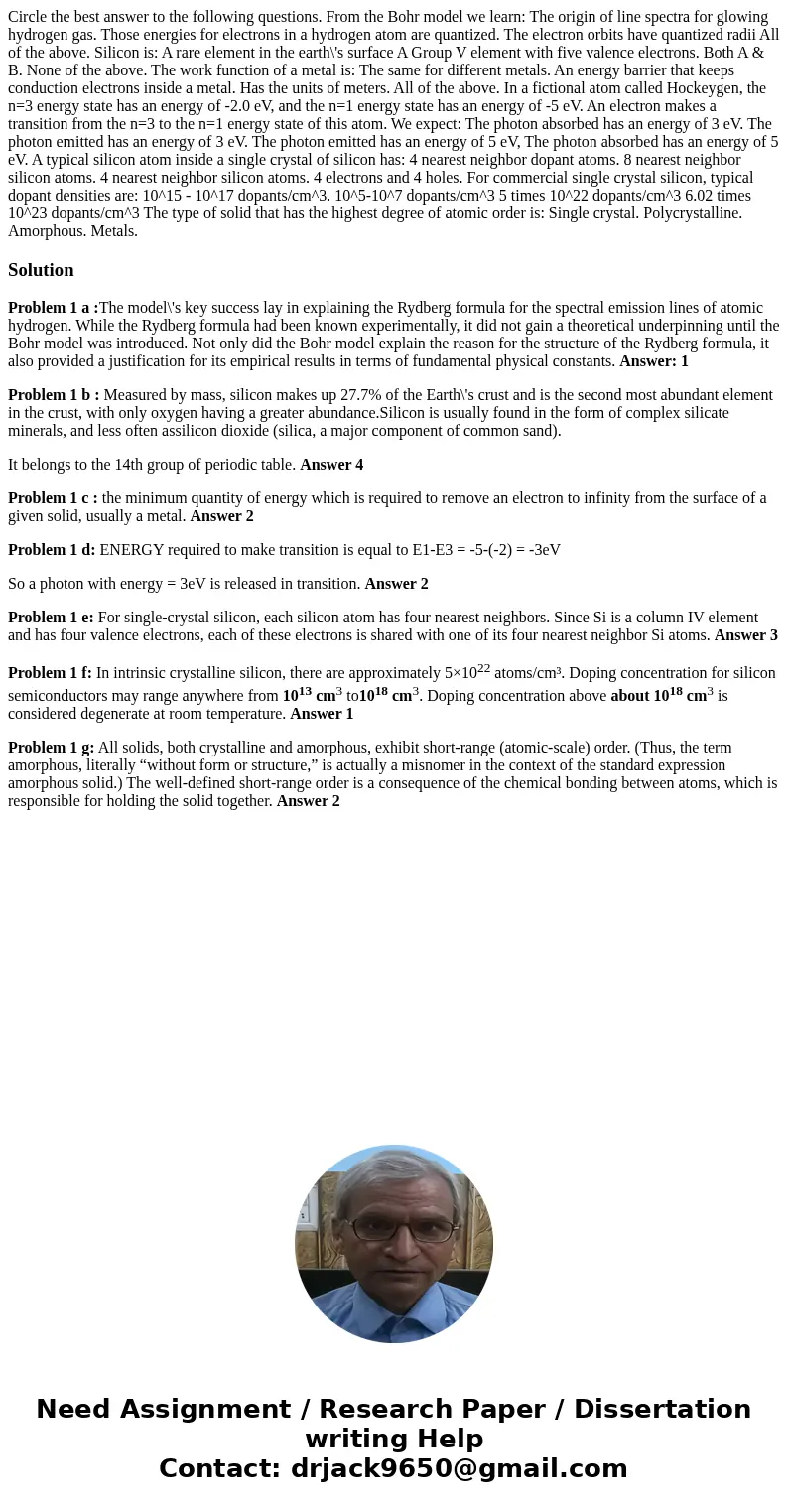Circle the best answer to the following questions From the B
Solution
Problem 1 a :The model\'s key success lay in explaining the Rydberg formula for the spectral emission lines of atomic hydrogen. While the Rydberg formula had been known experimentally, it did not gain a theoretical underpinning until the Bohr model was introduced. Not only did the Bohr model explain the reason for the structure of the Rydberg formula, it also provided a justification for its empirical results in terms of fundamental physical constants. Answer: 1
Problem 1 b : Measured by mass, silicon makes up 27.7% of the Earth\'s crust and is the second most abundant element in the crust, with only oxygen having a greater abundance.Silicon is usually found in the form of complex silicate minerals, and less often assilicon dioxide (silica, a major component of common sand).
It belongs to the 14th group of periodic table. Answer 4
Problem 1 c : the minimum quantity of energy which is required to remove an electron to infinity from the surface of a given solid, usually a metal. Answer 2
Problem 1 d: ENERGY required to make transition is equal to E1-E3 = -5-(-2) = -3eV
So a photon with energy = 3eV is released in transition. Answer 2
Problem 1 e: For single-crystal silicon, each silicon atom has four nearest neighbors. Since Si is a column IV element and has four valence electrons, each of these electrons is shared with one of its four nearest neighbor Si atoms. Answer 3
Problem 1 f: In intrinsic crystalline silicon, there are approximately 5×1022 atoms/cm³. Doping concentration for silicon semiconductors may range anywhere from 1013 cm3 to1018 cm3. Doping concentration above about 1018 cm3 is considered degenerate at room temperature. Answer 1
Problem 1 g: All solids, both crystalline and amorphous, exhibit short-range (atomic-scale) order. (Thus, the term amorphous, literally “without form or structure,” is actually a misnomer in the context of the standard expression amorphous solid.) The well-defined short-range order is a consequence of the chemical bonding between atoms, which is responsible for holding the solid together. Answer 2

 Homework Sourse
Homework Sourse